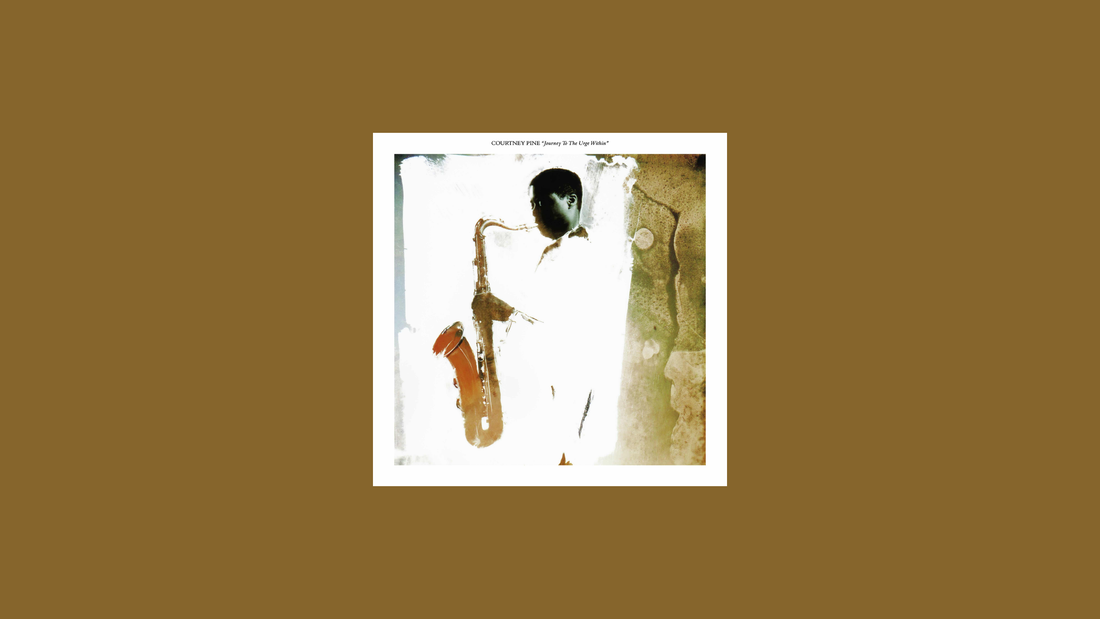
Journey to the Urge Within – Courtney Pine (1986)
A New Voice, Born From Old Rhythms
By Rafi Mercer
Every generation rediscovers jazz in its own accent. For Britain, that rediscovery happened in the mid-1980s — and at its centre was a young saxophonist from London named Courtney Pine. His debut album, Journey to the Urge Within, released in 1986, felt like a beginning — not just for him, but for a whole movement that would quietly redefine how jazz could sound, look, and live.
The title is telling: a journey inward. Not toward nostalgia, but toward identity. At the time, jazz in the UK was viewed as archival — a music preserved, not lived. Pine changed that. He made it feel local again, drawing from Caribbean heritage, London rhythm, and the immediacy of the streets. This wasn’t imitation; it was translation.
The album opens with Miss Understood — a composition that feels like both declaration and invitation. The tone is clear, confident, fluid. Pine’s tenor saxophone doesn’t shout; it speaks. Beneath it, the rhythm section (Mark Mondesir on drums, Gary Crosby on bass, Reuben James on piano) plays with both respect and invention. The groove is straight-ahead, but the phrasing carries the sway of reggae and soul. You can hear the blend that would later shape an entire British aesthetic — swing, but with pulse; technique, but with warmth.
In 1986, that was revolutionary. British jazz hadn’t sounded this contemporary since the days of Tubby Hayes. Yet Journey to the Urge Within wasn’t chasing modernity for its own sake — it was reclaiming emotion. Pine’s phrasing had clarity, but also kindness. His playing was virtuosic, yet deeply conversational.
Children of the Ghetto captures that spirit best. A cover of The Real Thing’s soul anthem, it’s a bold choice for a debut jazz album. But Pine transforms it into something timeless — the melody carried not by sentimentality, but by sincerity. You can feel him listening as much as playing. It’s music as empathy.
There’s a moment halfway through the tune where the horn lifts above the chord changes, just slightly, and for a second the whole sound feels airborne — jazz escaping form. That’s the point where you understand Pine’s gift: he made jazz sound less like genre and more like language.
Production-wise, the album walks a beautiful line between studio polish and live immediacy. The recording (produced by Delfeayo Marsalis) keeps the instruments natural, uncompressed, warm. The drums breathe. The piano sounds wooden and close. Through a good system, you can feel the air of the room — the sense of players responding in real time.
In the second half of the record, As Time Goes By and When Where How show a subtler side — harmonically rich, but never indulgent. Pine’s soprano tone glows, clear and glassy, while the band stretches space with patience. There’s confidence in the restraint. Nothing rushes. Nothing tries too hard.
In a listening bar, this record plays beautifully. Early evening, Miss Understood sets an easy tone; later at night, Children of the Ghetto feels devotional. There’s texture in every line, humanity in every note. The bass hums low, the snare flickers like light on metal, and the saxophone arcs through the room like conversation. It’s the kind of record that teaches you how to listen again — with curiosity, not comparison.
What’s striking, listening now, is how modern it still feels. You can hear in it the DNA of the scene that would follow — from the acid-jazz collectives of the ’90s to the London renaissance of today. Pine didn’t just play; he built a framework for others to speak through. His work opened the door for generations of musicians to approach jazz as community, not museum.
A few years later, that sensibility would reach new ears through Guru’s Jazzmatazz, Volume 1, where Pine’s playing met hip-hop production — a collaboration that felt inevitable in hindsight. The connection had already been made here: the same melodic fluency, the same sense of rhythm as speech. It was as if Journey to the Urge Within had quietly prepared the ground for dialogue between genres, long before the idea had a name.
But even without that later resonance, this record stands complete on its own terms. Its mood — calm, honest, open — carries the rare feeling of arrival. There’s no tension between past and present here, only continuity. You can sense the lineage — Coltrane’s introspection, Rollins’s clarity, the lyricism of Wayne Shorter — but filtered through British streets, British weather, British experience. It’s transatlantic music that feels anchored at home.
When I listen to Journey to the Urge Within now, I hear more than musicianship; I hear grace. There’s something restorative in the sound — the patience, the control, the refusal to shout. It reminds me that jazz, at its best, isn’t about solos or speed. It’s about attention.
For a debut, it’s astonishingly self-assured. Pine wasn’t trying to prove anything; he was simply arriving. The album feels like a statement of belonging — to jazz, to Britain, to the world of slow, deliberate listening.
At a time when much of music was obsessed with excess, Journey to the Urge Within offered presence instead. It’s a record that breathes between the notes.
By the end — the closing phrases of As Time Goes By dissolving into silence — what lingers is warmth. The sense that you’ve just heard someone discovering their voice and, in the process, inviting you to discover yours.
That’s what makes this record timeless. Not its innovation or its style, but its sincerity. It listens as it plays.
And in the end, that’s the urge within — the quiet need to understand the world through sound, one patient note at a time.
Rafi Mercer writes about the spaces where music matters. For more stories from Tracks & Tales, subscribe, or click here to read more.







